Appendix III
A Geneological Survey of Romanian Names
By Joan Motzu
There are a number of interesting angles in the ancestry-tracing of Romanian names. We will mention here but two of them, which are doubtless fundamental.
First, during the time where the territory of Greater Romania was under Roman rule (from 107 A.D. to 271 A.D.), the Romanian people had surnames. In the third and fourth centuries, the barbarian invaders began overrunning the Roman Empire. Eventually, even Rome fell to the invaders. The Romanian people, however, continued to live a free community life in most of the mountainous regions of Greater Romania, where they used, without interruption, the same names they had been using during the Roman time.
According to the Romanian philologists (Sextil Puscariu, etc.), the ancestors of the present-day Romanians had rustic names of animals, birds, plants, etc., ever since the Roman epoch. Indeed, we find at the present time such Romanian names as: Ariciu, Aricescu (Latin “Ericius”), Albu, Albescu (Latin “Albus”), Bucur (pre-Roman, Dacian or Thracian), Brad (pre-Roman, Dacian or Thracian), Caprioara (Latin “Capreola”), Capra, Caprita (Latin “Capra”), Cerbu (Latin “Cervus”), Cercel (Latin “Circellus”), Craciun (Latin “Calationis,” “Carationis”), Cucu (Latin “Cucus”), Fluture (Latin “Fluturus”), Iepure, Iepureanu (Latin “Leporem”), Lapadat (Latin “Lapidatus”), Lupu, Lupan, Lupei (Latin “Lupus”), Micu (Latin “Miccus”), Musat, Musetescu (pre-Roman, Dacian or Thracian), Negru, Negreanu, Negrescu (Latin “Nigrum”), Paun (Latin “Pavonem”), Porumb, Porumbaru, Porumbescu (Latin “Palumbus”), Sarpe (Latin “Serpes”), Soare (Latin “Solem”), Sorbu (Latin “Sorbire”), Sturzu (Latin “Turdus,” “Sturdus”), Ursu, Urseanu (Latin “Ursus”), Vulpe, Vulpescu (Latin “Vulpes”), etc., etc.
Let it be mentioned here that the foregoing names, and their derivatives, as well as others of the same kind, have an ancestry which goes back approximately 1800 years, and the greater part thereof have come down to us, by descent, from one ancestor to another.
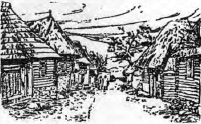

Second, aside from the foregoing ancestral names, we have others of a more recent date comparatively. Indeed, from the sixth to the tenth century, the Romanian people did not live alone in the mountainous regions of present-day Greater Romania. Another people, the Slavs, who were also devoted to the honest trade of cattle-grazing and farming, settled down in the neighborhood of some of the Romanian communities. Together, Romanians and Slavs, fought the more adventurous invaders, who attempted to penetrate into their mountain strongholds, and learned to share the happiness and misfortunes which life had in store for them. The Slavs, whose number was smaller than that of the Romanians, learned the Romanian language, marriages followed, and children were born from a “melting-pot” process of Romanians and Slavs.
According to the Romanian philologists, therefore, the more recent ancestors (those of about 1000 years ago) of the present-day Romanians began to use also Slav names. Indeed, we find at the present time such Romanian names of Slav origin, as: Aldea, Aldes (Slav “Aldija”), Barlea, Barlescu (Slav “Brle”), Bera, Berescu, Berila (Slav “Bera”), Bobu, Bobes Babes (Slav “Bobo”), Dobre, Dobrean, Dobrin (Slav “Dobre,” “Dobrin”), Dancu, Danciu (Slav “Danca”), Dragu, Dragan (Slav “Drago”), Ene, Enescu, (Slav “Ene,” “Enjo”), Iancu, Nica, Nitu, Nitescu (Slav “Janko”), Manea, Maniu, Manescu, Manila (Slav “Manjio”), Metea, Metes (Slav “Meto”), Mihu, Mihut, Mihoc (Slav “Miho”), Mirea, Mirescu (Slav “Miho”), Mirea, Mircescu (Slav “Mirca”), Oancea, Onciu, Oncila (Slav “Ionco”), Stanciu, Stanescu, Staunt (Slav “Stanco”), Vlad, Vladut, Vladescu (Slav “Vlad”), Vlaicu (Slav “Vlajko”), etc., etc.
Naturally, the Romanian who inherited one of the names mentioned above, or a derivative thereof, should not conclude that he is of Slav ancestry. Somewhere, back on the line, there may have been a maternal or paternal Slav ancestor, but this no longer matters. Those Slav names became part of the Romanian heritage, in their Romanian form, during the period from the sixth to the tenth centuries, that is, in most cases more than 1000 years ago!
It is characteristic of most of the Romanian names, whether they be from the Roman epoch (first to the third century A.D.), or from the epoch of the Romanian-Slav inter-mixture (sixth to the tenth century A.D.), that they tell a strange story, in their own way, if only by the fact that they have come down to us, as a heritage, during the course of so many centuries.
The Romanian need not search for a clue to claim descent from a “bearer of ermine,” for most of the Romanians have historical names with many centuries behind them. This is, in itself, a title. But there are other titles, too, as we shall see in due course.
II
The ancestry-tracing of names has always been one favored by the people. There are, it is said, approximately 20,000 professional geneologists in the United States engaged in genealogical research. This, in itself, proves how eager people are to ascertain their ancestry and the story which stands behind it, for, every family name has a history of its own, with its shady spots at times but nevertheless highly instructive and interesting.
As regards the Romanian people, we have already seen in the preceding article that most of them have Latin and Slav names which date as far back as 2000 and 1000 years, respectively. This is one feature which deserves being noted. There are, however, other features, too. Among them, we will note at the present time the fact that, on the whole territory inhabited by the Romanian people, the same historical names prevail though some of the Romanian were forced to live for centuries under foreign rule. Moreover, we find that names now common among the peasantry in Muntenia, Moldavia, and Transylvania, are names which have belonged to Romanian Princes, rulers, and nobles, of the fourteenth, fifteenth, and sixteenth centuries. We will glance back into the historical past of the Romanians and try to explain how this came about.
The political age of the Romanian people began in the thirteenth century. Until that time, that is, during the one thousand years of barbarian invasions, the Romanians lived in the mountainous regions of present-day Greater Romania. They “made” no history during those centuries, for the historians of those times were busy recording the ravages caused by the barbarian invaders.

Peace-loving, as the Romanians were, they lived in small communities, called “Countries,” in most instances beyond the reach of the numerous invaders. Those communities were a sort of mountainous and forest republics similar to the mountainous and forest republics (Cantons) of Switzerland of that same period. All Romanians were free and equal, as most mountaineers are.
After the barbarian invasions subsided, the Romanian people descended to their deserted regions of the plains and founded two countries, Muntenia and Moldavia. The mountaineers were pioneers on the plains and, as such, the bravest, most worthy and dynamic, acquired larger stretches of land and became the leaders of their newly founded communities. Eventually, some of them, were chosen by the people as their Princes, while others became statesmen and landlords. Thus, a Romanian nobility was born.
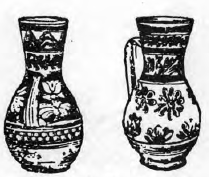
The Romanian noble, however, was not to be compared with his feudal “brethren” in other countries. He was an outstanding member of his community, to be sure, but he had no pretentious castle built from the sweat and toil of his subjects, nor any tides to convey upon his children; and his land belonged to him only as long as he was worthy of it. While in practically all other countries of Europe, the children of a nobleman were all noble, and the country was divided into three classes: the nobility, the clergy, and the proletariat — the latter a despised and unfortunate element of society — in the country of the Romanian people there was no such social segregation. Consequently, “nobles” and “common” people, in other words, the distinguished members of the community and the simple people, had an equal opportunity to go up, or down, according to circumstances and their natural ability, for, as we have already said, all of them were free and equal.
During the course of history, however, many social upheavals have befallen the Romanian people, mostly from without, and many a Romanian nobleman and Prince, despite his ability and merit, fell back into the lower ranks from which his forefathers had arisen. It is a great deal due to the foregoing that we find, at the present time, so many old historical names borne proudly by the Romanian farmer and tiller of the soil. For the benefit of the reader, we will set forth, in this and subsequent articles, some of these historical names, in alphabetical order, together with others of the same kind which are connected therewith:
ALBU, ALBOTA, former Moldavian nobles. One of them was Governor of the County of Neamt, from 1460 to 1470; PETREA was Minister of Interior for Southern Moldavia, in 1572; ALBU-THE-GREAT, former noble in Muntenia, tried to dethrone Prince VLAD Tepes, but failed and was decapitated in 1460; ALBU TOCSABA was Prime Minister of Prince DAN, in 1420, and of Prince ALEXANDRU ALDEA, from 1431 to 1436.
ARBORE, former Moidavian nobles. One of them became Governor of the County of Neamt, in 1470; his son, LUCA, was Governor of Suceava (Bucovina), and Councilor of Prince STEFANITZA, from 1498 to 1523; he sent an Ambassador, CARJA, to the Poles to conclude a treaty against the Turks, but paid for it with his life; in 1502, LUCA had built a church in the present-day town of Arbore, where he is buried.
BADEA, BADESCU, BADICA, former Moldavian and Muntenian nobles. BADEA CLUCERU was the leader of the expatriated nobles at the death of Prince MIRCEA CIOBANU, and died in 1519; the BADESCUS are recorded in the fifteenth century, at Muscel; one of them, BALOSIN, was a sort of Chief of Ceremonies; BADICA was the step-son of Prince RADU-THE-GREAT, and cousin of Prince NEAGOE; in 1521, he occupied the throne of Muntenia, but was dethroned and died at the hands of the Turks, in 1524.
BALACEANU, former nobles of Muntenia. They are recorded as early as the fourteenth century. One of them, CONSTANTIN-THE-CAPTAIN, served under Prince MIRCEA, in 1400; NEDELCU, was Prime Minister, about 1580; DRAGOMIR was Minister of War, in 1580.
BALS, former nobles of Moldavia. Recorded at the beginning of the fifteenth century; said to be related to the House of Balsa, of Montenegro, and a branch of the Counts of Provence de Baux; one of them, BALOS, was Chamberlain, froro 1432 to 1439; TEODOR was Chancellor, in 1525; and CHRISTEA was Prime Minister, in 1590, and became the son-in-law of Prince LAPUSNEANU.
BARBAT, former Princes of Muntenia, are a very old Romanian family of nobles; one of them, referred to as “Lituen” or LITEAN (the Latin), died in battle with the Hungarians, about 1272; Muntenia had not yet been founded; LITEAN’S brother became Prince of the “Country of Litean” (present-day Oltenia and Arges).
BARBU, former nobles of Muntenia, have their homestead in Oltenia; one of them was Governor of Oltenia, from 1490 to 1510, and built the monastery of Bistrita; BARBU II, son of PARVU, and brother-in-law of Prince MOISE, was also Governor, in 1529; BARBU III, son of PREDA, was Governor in 1534.
BOGDAN, former nobles of Moldavia, were Romanian nobles of Maramures, Transylvania; BOGDAN I crossed the Carpathian Mountains, into Moldavia, and founded the Moldavian Principality over which he ruled from about 1355 to 1365; another BOGDAN, son of Prince ROMAN I, and brother of Prince ALEXANDRU-THE-GOOD, died in 1411; BOGDAN II, son of Prince ALEXANDRU-THE-GOOD, ruled in Moldavia from 1449 to 1451; BOGDAN III was Prince of Moldavia, from 1504 to 1517; and BOGDAN IV was Prince of Moldavia, from 1568 to 1572.
We have mentioned, thus far, a total of 37 Romanian names. All of them: Albu, Albota, Petrea, Vlad, Dan, Alexandru, Aldea, Arbore, Luca, Stefanitza, Carja, Badea, Badescu, Badita, Cluceru, Mircea, Ciobanu, Balosin, Radu, Neagoe, Balaceanu, Nedelcu, Dragomir, Bals, Balos, Teodor, Christea, Lapusneanu, Barbat, Litean, Barbu, Parvu, Moise, Preda, Bogdan, and Roman, as well as their derivatives, are old historical names current among all the Romanians of whatever social standing or province they may be. There are, however, many more names to follow and their stories to record.

III
Before continuing with the enumeration of Romanian historical names, there are certain remarks which should be made. In the early centuries of the Christian Era, it would appear that most of the Romanians had but one name. Though the Romans had had surnames among the leading citizens, such as Julius Caesar, that system was lost not only in Dacia (present-day Romania), but also in Rome, after the barbarian invasions. It was late in the Middle Ages that family names became customary on the European Continent.
It is difficult to say when the first Romanians acquired family names. It may be said, however, that the family names were “made” by the important members of the Romanian community. A “mosh” (grandfather; hence “moshie,” heritage, for landed property), who had “made” a name for himself, transferred that name to his descendants. This is proven by the fact that, when the first Romanian villages appeared in history, we find them with such names as “satul Albesti,” “satul Boteni,” etc., that is, the village of the descendants of Albu, of Boteanu, etc.
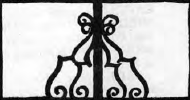
It is generally known that many Romanian family names end with the suffix “escu” or “eanu.” Of the two suffixes, “escu” appears to have been traced back to the Dacian time, that is, some 2000 years ago. When an “escu,” that is, a descendant of a “mosh” who founded a village ending in the plural “esti,” or an “eanu” as a descendant of a “mosh” who founded a village ending in the plural “eni,” “made” a name for himself he transferred his first name, with the respective suffix, to his descendants. Sometimes the first name was transferred, as a family name, without any suffix. This explains how it came about that first names became Romanian family names. They emerged into history by virtue of the acts and deeds of some worthy forefather:
BOLDESTI, is the name of the nobles of Boldesti, County of Prahova. They were well known in the sixteenth century. In 1552, UDREA revolted against Prince MIRCEA CIOBANUL, and was executed; in 1569, his brothers RAOU, BARBU, and CRACEA, revolted against Prince ALEXANDRU, and were also executed. Their political struggles failed and they paid for them with their lives. Their mother, MARGA, buried them in the Snagov Monastery (near Bucharest).
BOLDUR, is the name of Moldavian nobles, who played an important role during the heroic age of Romanian history, under Prince STEFAN-THE-GREAT. One of the BOLDURS was a General who vanquished the Poles at Lentesti, near Cernauti, on October 29, 1495. Various members of this family made more important names for themselves and are known as: KOSTAKI, EPUREANU, NEGEL, PATRASCAN, COSTACHE, TALPAN, and LATESCU, all of them historical names in the past of Moldavia.
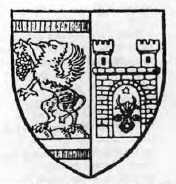
BORCEA, is a family of nobles of Muntenia. During the reign of Prince DAN II, one of the BORCEAS was Minister of Justice from 1420 to 1431.
BOTEANU, is a family of nobles of Muntenia, recorded in the sixteenth century. Their name is connected with the village of Boteni, County of Muscel. A “mosh” BOTEANU placed the foundation of that Village. In 1632, NEDELCU acted as a sort of Chamberlain for Prince LEON.
BOZIANU, is a family of nobles of Muntenia, recorded at the beginning of the sixteenth century. Their name is connected with the village of Bozieni. One of them, CALOTA, died in the service of Prince MIHAI-THE-BRAVE; at Targoviste, in 1600, when the latter created the first political “Greater Romania” by uniting temporarily Muntenia, Moldavia, and Transylvania.
BRADESCU, is a family of nobles of Muntenia, recorded in the fifteenth century. Their name is connected with the village of Bradesti, County of Dolj. One of them, BARBU, acted as Chamberlain for Prince MATEI BASARAB. Both Prince and Chamberlain took refuge in Transylvania, in 1630. Three years later, however, BARBU was in command of the army during the battle of Dudesti. In 1644, he became Governor of Craiova. A branch of the BRADESTI is also known under the name of POENARU, the nobles of the village of Poiana, County of Dolj.
BRAESCU, is a family of nobles of Northern Moldavia. One of them, BRAIA, is recorded between 1390 and 1400. Another, PAN DUMA, acted as Councilor from 1443 to 1453. Finally, a GRIGORE is recorded in 1605. A village, Braesti, is recorded about the end of the fourteenth century, in the County of Dorohoi.
BRAILOI, is a family of nobles of Oltenia. In 1530, the BRAILOIS owned the village of Vadeni. One of them, CORNEA, was Governor, Councilor, and friend of Prince BRANCOVEANU, between 1694 and 1705. BARBU, son of CORNEA, was General in command of the army of Oltenia against the Phanariote Prince MAVROCORDAT, and acted as Governor of Oltenia from 1716 to 1718. Finally, another BRAILOI by the name of DUMITRASCU acted as Councilor, in 1718.
BRANCOVEANU, is a family of Princes of Muntenia. The name is connected with the village of Brancoveni, County of Romanati. They are descendants of the nobles of Craiova. Before 1560, one of them, VALSAN, was the husband of MARGA of the Craiovesti. DANCIU, the son of VALSAN, and father of Prince MATEl BASARAB, took refuge in Transylvania with his brother, RADU. Another one, DAVID, had a son, PREDA, who was executed by Prince MIHNEA, in 1658. His nephew, CONSTANTIN BRANCOVEANU, became Prince of Muntenia, in 1689. He ruled for 24 years, through the storm of Turkish interference, and encouraged the arts, monasteries, schools, and the printing of books. Tragedy befell him on August 28, 1714, when he and his five sons were executed in the presence of each other by the Turks, at Constantinople. Other members of the family, however, continued the name. In 1804, we find MANOLACHE, and in 1822, GRIGORE, the latter as the founder of the BRANCOVEANU Hospital, in Bucharest.
BRATASANU, is a family of nobles of Craiova. Their name is connected with the village of Brataseni, County of Romanati. One of them, GHINEA, also known as OLARU, was assistant minister of Finance of Prince MATEI BASARAB, and PREDA was Ambassador of Prince BRANCOVEANU, in 1689.
BRATIANU, is a family of nobles of Muntenia, recorded in the seventeenth century as the owners of the village of Bratieni, County of Arges. The BRATIANUS are a more recent historical family than the many others. IOAN BRATIANU emerged as a leader in the 1848 Revolution, and as Chief of the Liberal Party. His brothers, sons, and nephews are leading figures in the contemporary history of the Romanian people, as many other Romanian families had been during the past centuries.
We feel that we should interrupt, here, for lack of space, the enumeration of the historical names. Before concluding this third article, however, we should say that, by virtue of the law of evolution in a land where merit and personal enterprise was the rule, every Romanian has at least one “mosh” who played a role in Romanian history.
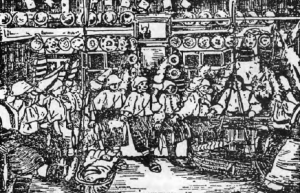
IV
One of the features of the Romanian historical family names is the occurrence of the same name over the whole territory of Greater Romania. From the eastern border of Bessarabia to the western border of Transylvania, and from the Bucovina and the Maramutes, in the north, to the Danube, in the south, the whole territory is sown by the same family names, as if planted there by some master tiller of the soil. Various foreign rules there were over that territory, but the Romanians of the past centuries lived with the idea of a vast “lume romaneasca” (Romanian world) extending over a territory which comprised about what is now known as Greater Romania. That “lume romaneasca” was such a reality that it is mentioned in the preface of the Romanian Bible of 1688.
The reader will have noticed from the previous articles and will notice from the subsequent articles in this series, that the same family names occur in Muntenia, Moldavia, and Transylvania. This phenomenon is a part of what is known as the Romanian inter-provincialism. When Romanians of Transylvania, for instance, came into conflict with the local foreign rule, as many of them did, they crossed the Carpathian Mountains to their countrymen of Muntenia or Moldavia, as did Prince Bogdan of Maramures, the legendary Prince Negru of Fagaras, together with their followers, and many others thereafter. And, every time a prince was deposed from his throne in Muntenia or Moldavia, by local opponents or foreign interference, he, together with his family, relatives, assistants, etc., took refuge from Muntenia, for instance, to Moldavia or Transylvania, and from Moldavia to Muntenia or Transylvania.

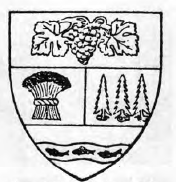
The condition outlined above prevailed for many centuries, and there were, at all times, persons in “exile” from one Romania province to another. Some time the exile lasted for short periods, at other times, however, it lasted for years. Many political refugees travelled back and forth, and many of them had two or three households, in the various provinces, where they built churches and lived as members of those communities. It is sufficient to mention, for instance, the churches built in Transylvania by the Moldavian and Muntenian princes. When political misfortune was against them, the refugees, whether princes, noblemen, etc., remained in the province where they had taken refuge and many of their descendants gradually fell into the lower ranks and became members of the Romanian inter-provincialism. Little did they know that their misfortune was making Romanian history by their contribution to the unity of the Romanian nation:
BREZOIANU, nobles of Muntenia, of the town of Brezoaia, County of Ilfov. They are recorded in the 16th century. One of them, PETRASCU, was Minister of Justice for Prince Brancoveanu, and was executed by the Phanariot Prince MAVROCORDAT because he plotted against the latter.
BUCIOC or BACIOC, Moldavian nobles of the 16th and 17th centuries. One of them, COSTEA, was Minister of Justice, and was killed by the Turks in 1620.
BUCIUM, Moldavian nobles recorded between the 15th and the 17th centuries. Their name is apparently derived from the Latin “buccinum” or “bucina” (a shepherd’s musical instrument). One of them was Prefect of Hotin, in 1466; CONDREA was Minister of Justice from 1581 to 1592; another one was a sort of Chamberlain and died in the battle of Finta in 1653. The name BUCIUM, as the name of persons and of villages and towns, is scattered over the whole territory of Greater Romania with its derivatives: BUCIUMI and BUCIUMENI; and there is a BUCIUM monastery in the County of Fagaras, recorded in 1737.
BUCSANU, Muntenian nobles from BUCSANI, descendants of STOICA, Governor in 1540; BARCAN was a sort of Chamberlain prior to 1611; PREDA was Governor prior to 1664; and STAICU was one of the leading members of BALEANU’S party in 1669. A branch of the BUCSANUS acquired the name of MERISANU.
BUDAI, Romanian nobles of Transylvania. One of them lived in the 17th century and was secretary of Rakoczy, the Prince of Transylvania; another one was Orthodox Metropolitan of Alba Iulia, in 1680; and BUDAIDELEANU was a writer and professor at Blaj prior to 1788. Like Petru MAIOR, he devoted a substantial part of his activity to Romanian philology and history.
BUHUS, nobles of Moldavia between the 14th and 19th centuries. Mention is made of one of them under Prince Alexandru, in 1420; another one was minister of finance; SANDU was governor and regent of Moldavia, in 1678; LUPASCU was Army Commander in Muntenia prior to 1676; and three successive BUHUS were Ministers in 1715, 1757, and just before 1846, respectively.
BUJOREANU, nobles of Muntenia, recorded in the 16th century as the nobles of PAUSESTI and BUJORENI. One of them, SERBAN, was Councilor to Prince BRANCOVEANU, and Governor in 1716.
BURLA, nobles of Moldavia, between the 14th and 16th centuries. One of them is recorded as early as 1385 at the Court of Prince Petru; and another one is mentioned as Ambassador to Poland, in 1545.
BUZESCU, nobles of Oltenia, mentioned in the 15th century. CARSTIAN was Minister of Justice in 1483; VLAD was Governor prior to 1545; another one was Prefect; and BALICA was Army Commander about 1520. Prince MIHAI-THE-BRAVE enjoyed the service of three BUZESCU: PREDA, as Governor; STROE, as Chamberlain; and RADU, as a distinguished general and ambassador.
CANTACUZINO, nobles of Muntenia and Moldavia, of Byzantine origin. One of their ancestors was Emperor of the Eastern Roman Empire in the 14th century. After the fall of Constantinople to the Turks, in 1453, a number of Byzantine Imperial families took refuge to the Romanian Principalities. The CANTACUZINOS were among them. One of them, DRAGHICI, was Army Commander; IORDACHE was Army Commander in 1661; SERBAN was Prince of Muntenia, in 1678; another SERBAN was Prime Minister prior to 1718. During the 18th century the family had already grown into three branches in Muntenia, and two branches in Moldavia. There are over thirty CANTACUZINOS who played a role in Romanian life. All of them, together with the anonymous ones lost in the lower ranks, bear a justly proud name.
CARJA, nobles of Moldavia, recorded in the 15th and 16th centuries. One of them, LUCA, was sent by Prince STEFANITZA to Poland in order to conclude a treaty against the Turks, in 1518; later, in 1523, he had the same mission and was so skilful in his oration that he convinced the King of Poland, and thus “CARJA became the first Romanian orator” recorded by history. Another CARJE, by the name of SANDRU, is mentioned during the reign of STEPHEN-THE-GREAT (1457-1504), as Chancellor, together with Chancellors: ANDREICA, VULPAS, STEFUL, TOMA, STETCU, TAUTUL, ROMAN, NEGRILAS, BORCEA, OANTA, COSTEA, MATIAS, POPOVICI, VASCAN, etc., who were entrusted with the compilation of the Annals of Moldavia, known as the “Letopisetul dela Bistrita,” which cover the reign of that Romanian Prince to whom Pope Sextus IV wrote: “The high deeds which thou hast accomplished. . . have rendered thy name so glorious that all sing thy praises.”
Again, for lack of space, we shall have to interrupt, at this time, the enumeration of the Romanian historical family names. The reader, however, should bear in mind that Romanian phenomenon — the inter-provincialism. It explains why such names as those enumerated above, and many other Romanian family names, are just as current in Muntenia as they are in Moldavia and Transylvania. They are not “provincial” names. History records them in one province or another, where they distinguished themselves. They are names of that “Romanian world,” which was born and developed west, east, and south of the Carpathian mountains, with the Carpathians as their common stronghold and ethnical fortress.

We have endeavored to show, during the previous articles, what stands behind the Romanian historical family names. There is no ending to the story which they tell. For, if history is made by the heroic deeds of some members of a nation — by all means the most outstanding members thereof — the history of the Romanian nation is characterized by the sharing of practically the whole nation in the making of Romanian history. From the mountains to the plains, on both sides of the Northern and Southern Carpathian Mountains, that is, in Transylvania and Moldavia, on the one hand, and in Muntenia, on the other, the Romanian nation, as a national entity, one and indivisible even before nationalism became a State idea, made the living history of the Romanian people.
If it is true, as it is, that the political name “Romania” is of a relatively recent date, as compared to other political names, the name “Romanian” is very old, indeed. And, not only is the name “Romanian” centuries-old, but it was used as such to designate the inhabitants living on the territory which we have rightly come to know as Greater Romania. True, the surrounding foreign peoples have often corrupted the name by translating it into their own language. The Hungarians and the Austrians, for instance, called the Romanians of Transylvania and Muntenia “Olahs” and “Wallahs,” hence also the name “Wallachia” for the Province of Muntenia. But “Olah” and “Wallah,” these two words of Germanic origin meaning “Roman,” only confirm what we have just said.
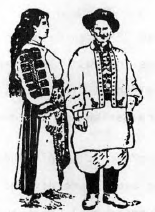
As for the Romanians of the Province of Moldavia — the Country of Stephen-the-Great, the Prince of Christianity — that Province made such a great name for herself as “Moldavia” (probably a name of Roman origin: “Moles Davis” meaning the “Rampants of the Dacians”) that, though Romanian as she was in body and in spirit, she imposed the name not only on the territory between the Carpathians and the Nistru river, that is, in Moldavia proper and in what later became known as Bessarabia, but also beyond the Nistru river in what is now called the Moldavian Soviet Socialist Republic.
It is in such perspectives as those outlined above that we must view the Romanian historical family names. History is not merely the narration of chronological events in the life of a nation. Romanian history, in particular, was made by the continued efforts of practically the whole nation. The name of nearly every Romanian is a link in the great chain of historical events. Many of these names, with the deeds which they have accomplished, are buried in old Romanian and foreign archives, and no serious efforts have been made as yet to unearth and present them. But, when and if such efforts are made, we for one are confident that the true magnitude of the Romanian people’s history will come to light. Until then, let us continue with our modest contribution from the material already available:
CATARGIU, nobles of Moldavia, first recorded in Muntenia. One of them was Governor under Prince MIHNEA of Muntenia. Another was Chamberlain to Prince LUPU of Moldavia. APOSTOL was Commissioner about 1674. IORDACHE was Minister of Finance prior to 1842, and LASCAR was the Chief of the Conservative Party after the 1848 Revolution.
CAMPINEANU, nobles of Muntenia, whose name is derived from CAMPINA, the present-day oil region north of Ploesti. One of them, DRAGHICI, was Ambassador for Prince BRANCOVEANU, in 1705, and SCARLAT was Councillor in 1800.
CANDEA, CANDESCU, nobles of Muntenia, natives of BADENI in the fifteenth century. They were later known in the town of CANDESTI, apparently founded by them, where they built a church about 1665. MIHALCEA was Minister of Justice prior to 1635. His brother, RADU, was also Minister of Justice, and NEGOITA and another brother died at the hands of Prince MIHNEA in 1658.
CARSTE, CARSTEA, nobles of Moldavia. One of them was first recorded in the present-day Province of Bucovina, as Minister of Justice, about the year 1594. Another died at the hands of Prince ILIAS, in 1617, because he supported LUPU MEHEDINTEANU.
CARSTIAN, nobles of Muntenia. One of them was Minister of Justice from 1483 to 1504. It is very likely that this name, like the names CARSTE and CARSTEA, eventually acquired the form CRISTEA, which predominates particularly in Transylvania.
COGALNICEANU, nobles of Moldavia, residents of that part which later became known as Bessarabia, apparently derived their name from the COGALNIC river. ENACHE was a scholar and wrote the Annals of Moldavia from 1733 to 1774. MIHAIL COGALNICEANU was an outstanding Romanian statesman, during the middle of the nineteenth century, and the greatest representative of Romanian democracy during his time.
CORBEA, CORBI, CORBEANU, CORBENI, are known mostly in Muntenia. One, TEODOR, however, appears to have been a native of Transylvania. He was a writer and became the Latin Chancellor of Tsar Peter-the-Great of Russia. Though all were apparently descended from the same branch, they broke up into a number of outstanding families: RADU, recorded in 1500. STAN, a General, whose daughter, STANCA, became the wife of Prince MIHAI-THE-BRAVE, the founder of the first Greater Romania, in 1600. VINTILA was Minister of Justice in 1590. TEODOSIE was Governor from 1637 to 1641, and DUMITRASCU was a leading member of the CANTACUZINU Party prior to 1706.
COSTEA is a very popular name particularly in Transylvania. Yet, it should be mentioned that the first recorded COSTEA may be the one known as COSTEA MUSAT, Prince of Moldavia, and founder of the MUSAT Dynasty, in 1373. It would appear that a COSTEA crossed the Carpathian Mountains from Transylvania, as Prince BOGDAN had done, when he came into conflict with the Hungarian King. One of the Transylvanian COSTEAS is referred to in Latin as a “VALACHUS NOBILIS” (a “Romanian Nobleman”), in 1404 by the Polish Chronicles. Another COSTEA is known as the first District Governor of Prince STEPHEN-THE-GREAT from 1448 to 1453. The great number of COSTEAS and MUSATS, however, were natives of Transylvania, at times reinforced by their returning relatives from the newly founded Moldavian Principality. The deeds of the Transylvanian branch, in their struggle against the Hungarian intrusion, are little known. It is probable that they are buried in the old Hungarian archives, like other Romanian names which have accidently come to light.
COSTIN is an equally old Romanian name, first recorded in Moldavia, in 1392. Another one is recorded in 1430, and ALEXANDRU COSTIN was Hatman (Governor) of the Ukraine about the year 1633. His son, MIRON, was a scholar and played an important role in the history of Moldavia.
DAMIAN, nobles of Moldavia, are first recorded in 1437 when one of them became Metropolitan of the Moldavian Church. He was a cultured man and took part, as the representative of the Romanian Church, in the Council of Florence. A number of other DAMIANS are recorded, during the subsequent centuries, particularly in Moldavia, such as, VASILE DAMIAN during the reign of Prince CANTEMIR (1688). He wrote a history of Moldavia, and also attempted to write poetry. But, the DAMIANS, like many of the other names enumerated heretofore, were doubtless Transylvanian by origin and acted as pioneers in the founding of the Moldavian Principality.
It is difficult, indeed, to break the continuity of this narration, which represents both Romanian history and genealogy. But, for lack of space, we will have to do so and indulge again, in the story of the Romanian family names, in the subsequent articles.

